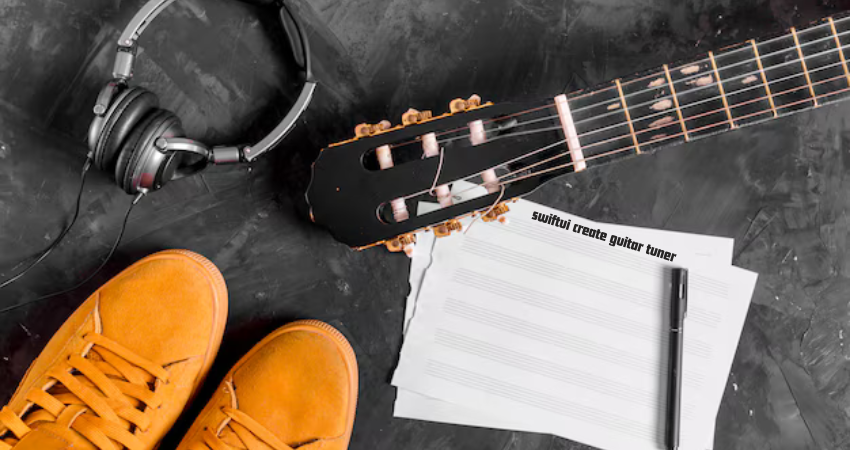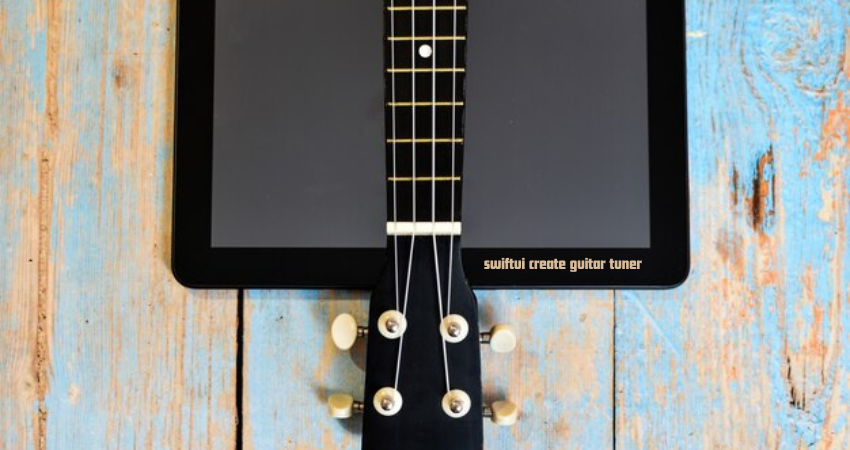Swiftui create guitar tuner, a language of elegance birthed by Apple, is a conductor in the orchestra of modern app development. Like a maestro commanding harmony from disparate notes, SwiftUI empowers creators to weave intricate melodies of functionality and design. In the grand narrative of this revolutionary framework, one remarkable application arises—a guitar tuner. This story weaves together technology, creativity, and the timeless pursuit of perfect pitch, creating a rich tapestry worthy of exploration.
Prelude: The Dawn of SwiftUI
The unveiling of swiftui create guitar tuner at Apple’s Worldwide Developers Conference (WWDC) in 2019 marked a pivotal shift. It wasn’t just another toolkit—it was a revelation. Before its emergence, developers wrestled with complex interface-building frameworks like UIKit and AppKit, powerful yet labyrinthine.
With SwiftUI, Apple extended an olive branch to developers yearning for simplicity. A declarative syntax replaced the verbose imperatives of old, rendering interfaces not just as code but as poetry. Imagine writing, “A button shall be blue and will sing upon touch,” rather than engineering an intricate machinery of callbacks and layout constraints.
This simplicity was not devoid of power. SwiftUI was built on the bedrock of Swift, a language celebrated for its clarity and safety. Together, they promised a seamless experience across Apple’s ecosystem, from iPhone to Mac, Apple Watch to Apple TV. For developers, this was a call to action—a hymn of opportunity.

Act I: The Guitar and Its Eternal Call
A guitar is no mere instrument; it is a soul enshrined in wood and steel. From the fiery strums of flamenco to the contemplative chords of folk ballads, its voice transcends cultures and eras. Yet, to speak its truth, a guitar demands harmony. Strings must vibrate in unison, their frequencies aligned to perfection. This is where a guitar tuner becomes a musician’s indispensable companion.
The concept of tuning dates back centuries, long before digital aids. Ancient luthiers relied on tuning forks and their finely trained ears. The evolution from analog tools to electronic tuners marked a quantum leap, but the story didn’t end there. With the advent of mobile technology, developers envisioned guitar tuners not as standalone devices but as apps that could live in every pocket.
SwiftUI entered this narrative as a modern bard, poised to rewrite the tale of app development.
Act II: Crafting a Digital Virtuoso
A guitar tuner app is more than a utility; it is a bridge between art and science. It deciphers sound waves, maps them to musical notes, and provides real-time feedback. Creating such an app requires an intricate dance between user experience and technical precision—a challenge that SwiftUI embraced with aplomb.
1. Designing the Interface: Simplicity in Elegance
With SwiftUI, every line of code becomes a brushstroke. Developers start by sketching the app’s visual layout:
A centered needle gauge, reminiscent of vintage analog tuners, to evoke familiarity.
Frequency bars on either side to visualize pitch deviation.
String selectors styled as polished icons, lending the interface a tactile quality.
SwiftUI’s declarative syntax makes this design intuitive. The developer simply declares the desired elements, and SwiftUI orchestrates their arrangement dynamically, adjusting for screen sizes and orientations.
2. Capturing Sound: The Core of Functionality
Behind the interface lies the heart of the app—the audio engine. Using Apple’s powerful Core Audio framework, developers capture real-time sound from the device’s microphone. The sound waves are analyzed through Fast Fourier Transform (FFT), a mathematical technique that deciphers frequencies with surgical precision.
SwiftUI doesn’t directly handle audio processing but provides seamless integration with foundational frameworks. Developers can bridge the gap using Swift’s interoperability, weaving together these tools to decode the guitar’s voice.
3. Feedback Loop: Precision Meets Intuition
Feedback is the soul of a guitar tuner. With SwiftUI, feedback is not just auditory but also visual and tactile.
Visual cues include the needle gauge moving toward the center when the pitch is correct.
Haptic feedback ensures the user feels the “click” of a perfectly tuned note, leveraging Apple’s Taptic Engine.
Auditory tones can mimic the target pitch, offering an alternative reference.
Each of these elements reflects SwiftUI’s hallmark: integration. It empowers developers to blend sensory channels into a cohesive user experience, all while writing code as concise as a sonnet.
Interlude: A Harmonious Revolution
By 2021, SwiftUI had matured. Apple’s annual updates brought refinements, from enhanced animations to more robust state management. Meanwhile, the world of guitar tuners expanded. Developers around the globe contributed to this ecosystem, crafting apps that catered to every genre, skill level, and aesthetic preference.
The story of SwiftUI and guitar tuners is not merely one of technology but also of democratization. Anyone with an idea, a passion for music, and a willingness to learn could now create an app that might change how musicians practice and perform.
Act III: Beyond the Basics
As guitar tuner apps evolved, they transcended their original purpose. SwiftUI’s versatility inspired developers to reimagine the tuner as a multifaceted tool:
Chord trainers, to teach beginners the nuances of finger placement.
Recording features, for musicians to capture inspiration on the fly.
Customizable tunings, catering to experimental and traditional genres alike.
Each feature added a new layer of complexity and opportunity. SwiftUI rose to the challenge, with its modular approach allowing developers to iterate quickly and integrate effortlessly.

A Resonant Future
As we gaze into the horizon, the harmony between SwiftUI and musical innovation promises to deepen. Augmented Reality (AR) might transform guitar tuners into immersive learning tools, projecting holographic frets into the real world. Artificial Intelligence (AI) could take pitch detection to unprecedented levels, offering personalized suggestions to improve tone and technique.
SwiftUI will undoubtedly remain at the forefront, its declarative nature continuing to empower developers to dream big and create beautifully.
Coda: A Legacy of Harmony
The history of swiftui create guitar tuner is a ballad of ingenuity, passion, and transformation. It reminds us that technology, at its best, is not a cold machine but a living companion, enabling us to tune not just our instruments but also our lives.
As you pick up your guitar today, perhaps with an app crafted in SwiftUI by an unseen artisan, take a moment to reflect. Behind the simplicity of a needle finding its center lies a symphony of human creativity, bridging the worlds of code and music, logic and soul.


